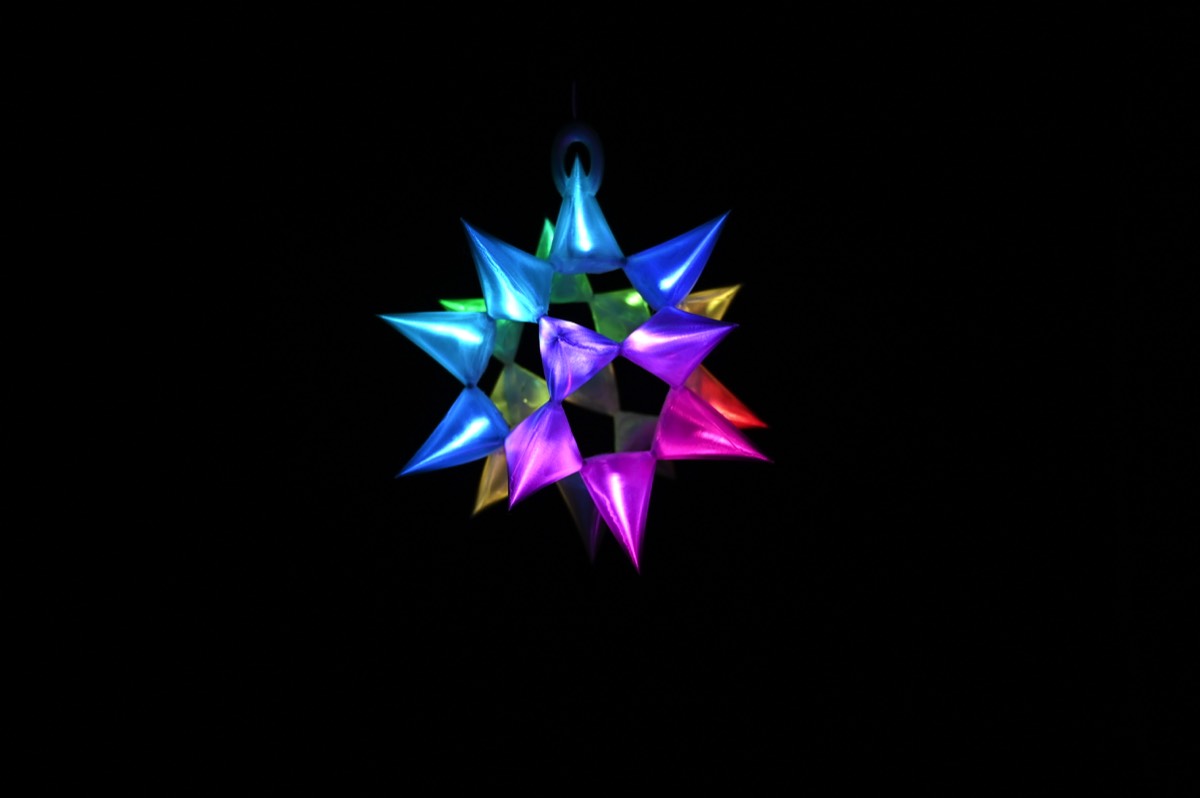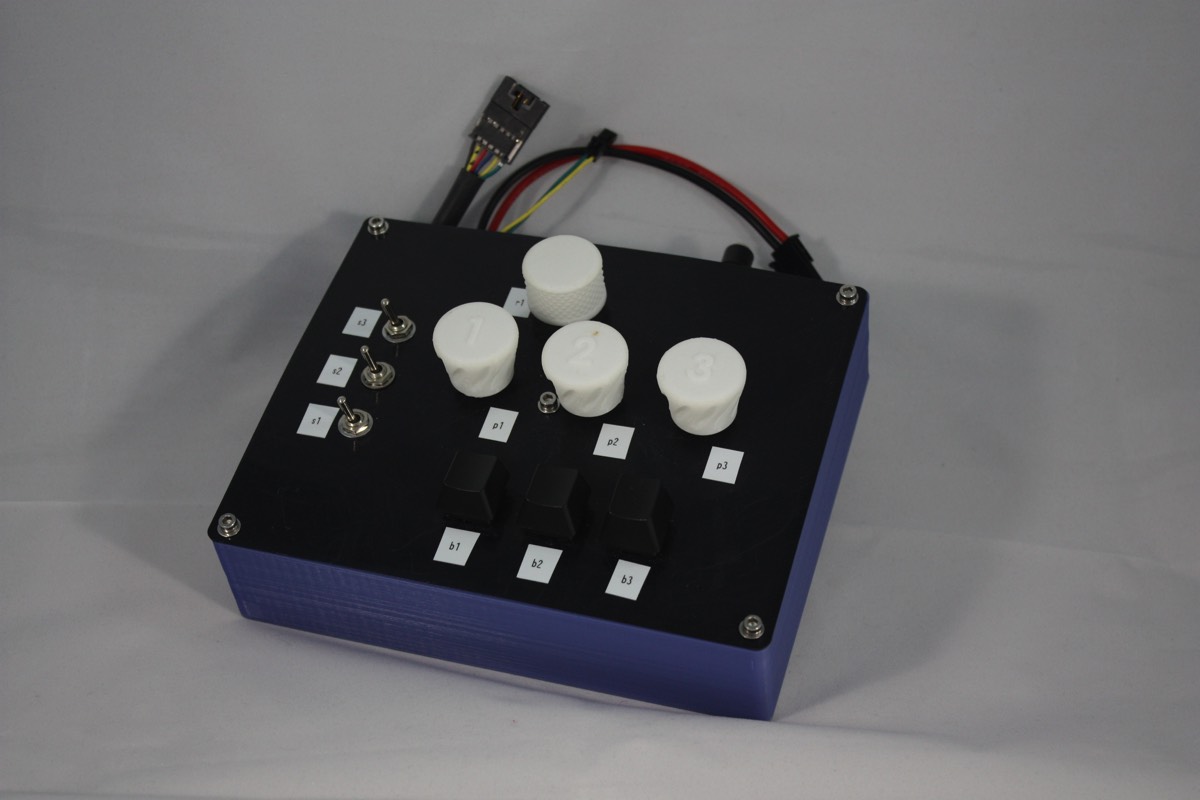3d printed interactive Barth Sextic
by silviana amethyst
spring 2022
The Barth Sextic is such a cool algebraic surface!
- Nodally singular
- 20 compact pieces connected at 30 double points
- 20 non-compact pieces connected at 20 double points
- Two dodecahedra can be drawn using it
- Isocahedral / dodecahedral symmetry group
I've previously written about the Barth Sextic in my work blog a few times:
I've been obsessed with this surface since 2014, when I printed had my first one printed at the NCSU Makerspace -- and it promptly broke. Ever since then, I've been on a quest to make the most amazing renders of it into the physical world. This electronic project was a huge step forward, in a bunch of ways.
Let me share some of it with you!
Pictures
All rights reserved by silviana amethyst. I do not consent to the use of these images for machine learning.




Definition
First, I give you a 3-variable equation for the Barth Sextic. \( \phi \) is the golden ratio \( \frac{\sqrt{5}+1}{2} \). Also note the =0, so that the Sextic is the zero-set of a single polynomial.
\( 4(\phi^2 x^2-y^2) (\phi^2 y^2-z^2) (\phi^2 z^2-x^2) - (1+2\phi) (x^2+y^2+z^2-1)^2 = 0 \)
This equation is actually a simplification from the projective form, since the Sextic is defined in \( \mathbb{P}^3 \), complex three-dimensional space, in which points have four coordinates, but they are the same point if they lie on the same line. That is, a point \(x = (x_0, x_1, x_2, x_3) \in \mathbb{P}^3 \) is equivalent to another point \(y = (y_0, y_1, y_2, y_3) \in \mathbb{P}^3 \) if there exists some scalar \( c \neq 0 \in \mathbb{C} \) such that \( x = c \cdot y \). I like to think of the "extra" variable (there are four, but \(\mathbb{P}^3 \) is three-dimensional) as the "homogenizing variable" \( w \), which moves the point at infinity to be a finite point; this is when \( w = 0 \).
The projective equation for the Barth Sextic is as follows:
The projective equation for the Barth Sextic is as follows:
\( 4(\phi^2 x^2-y^2) (\phi^2 y^2-z^2) (\phi^2 z^2-x^2) - (1+2\phi) (x^2+y^2+z^2-1)^2 w^2 = 0 \)
and to recover the affine version, I set \(w = 1\).